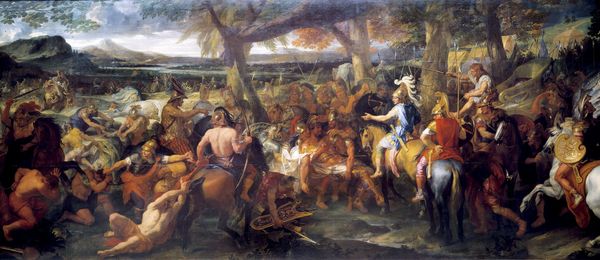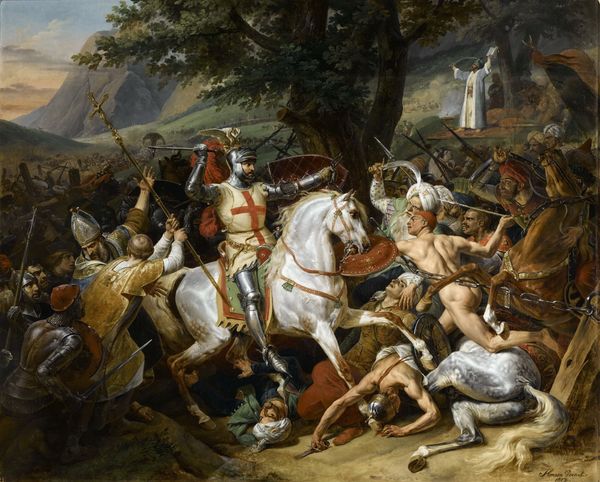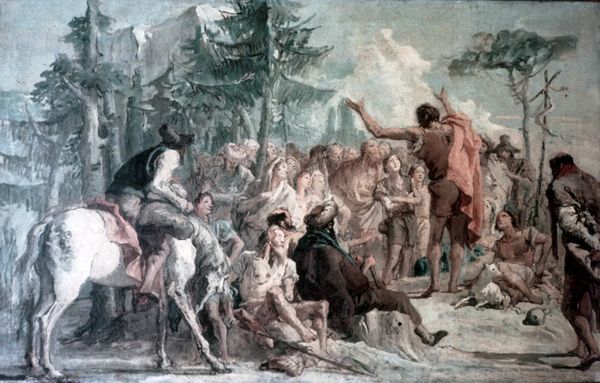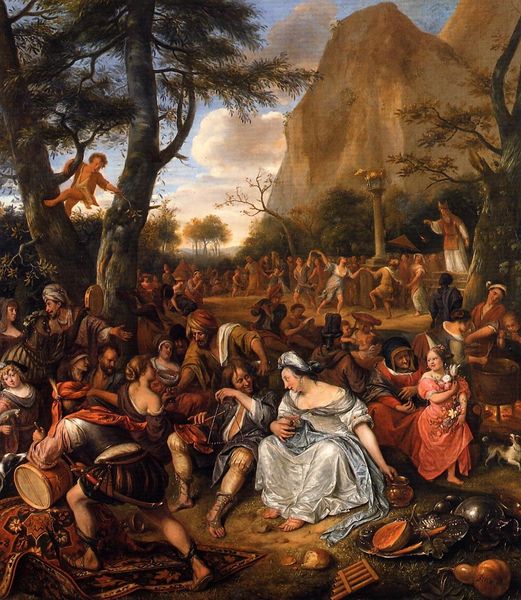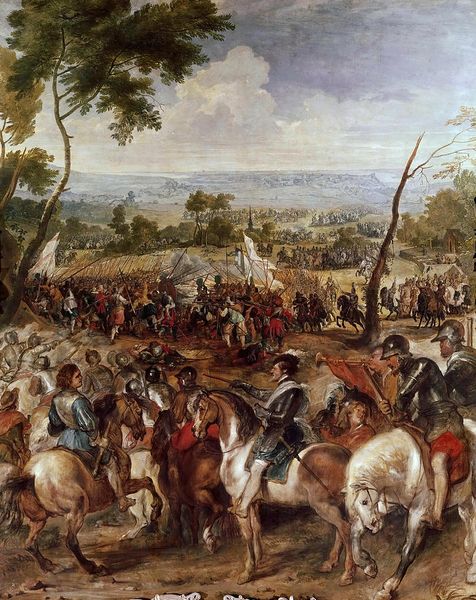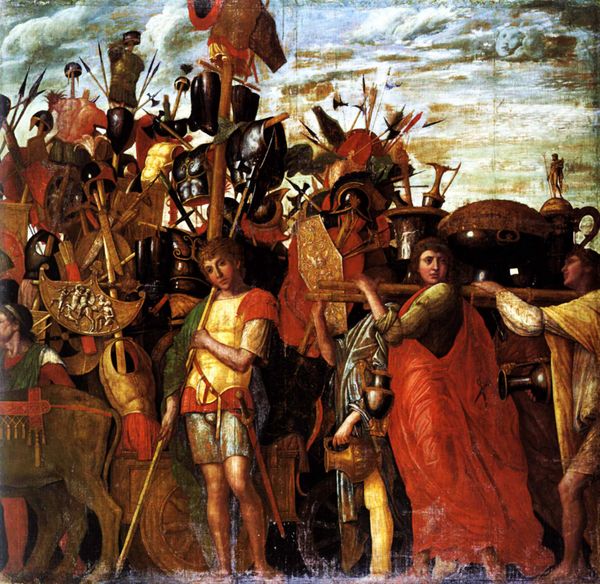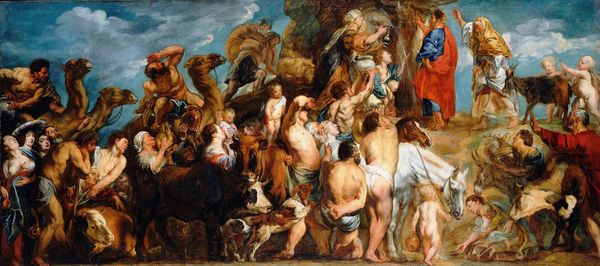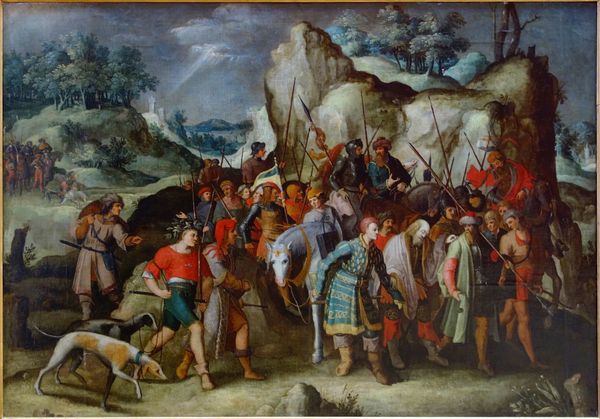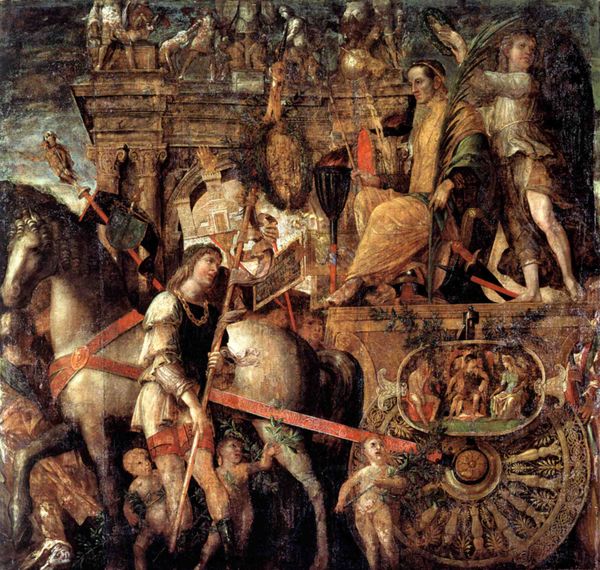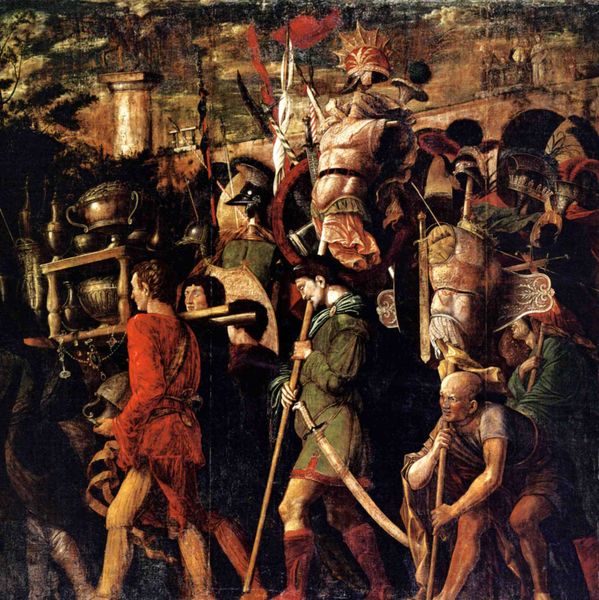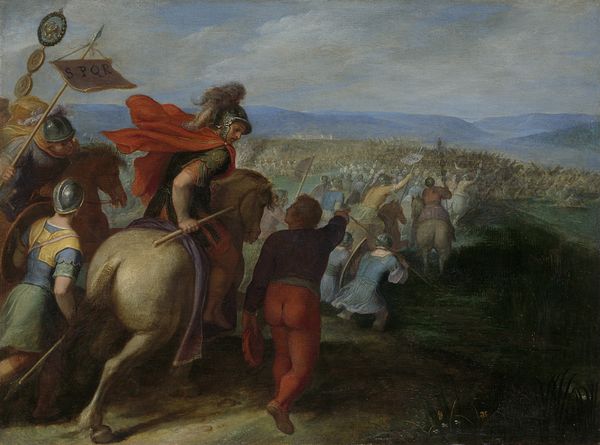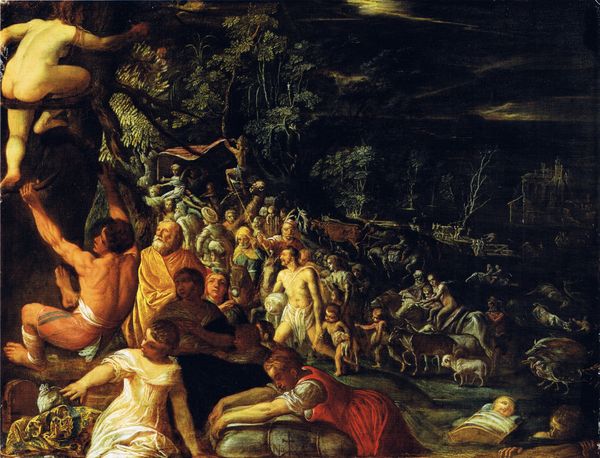
Copyright: Public domain
Charles Gleyre painted "Romans Under the Yoke," capturing a scene laden with potent symbolism. The yoke, prominently displayed, is not merely a tool of subjugation; it's a visual metaphor for the crushing weight of defeat and humiliation, evoking primal fears of captivity and loss of autonomy. Observe how this motif echoes across centuries, from ancient depictions of defeated enemies to modern representations of oppression. The act of passing beneath a symbolic barrier appears in triumphal arches, re-emerging in various guises throughout history as a testament to power dynamics. The raised arms of the figures surrounding the yoke suggest both triumph and ritual, a collective expression that taps into our shared memory of victory celebrations, and the intrinsic human need to dominate. This scene engages us on a subconscious level, stirring deep-seated emotions connected to dominance and submission, victory and defeat, themes perpetually replayed in the theater of human history.
Comments
No comments
Be the first to comment and join the conversation on the ultimate creative platform.
